Orangutans are synonymous with Borneo.
On a recent trip to Malaysian Borneo, it was my self-proclaimed duty to seek out the pot-bellied yet muscular, relatives of our species, the Orang Utans or the humans of the jungle.
But when on vacation-mode, time tends to fly fast. On the last day of my 4-day trip to Borneo, I suddenly found myself in a time crunch. I had an afternoon flight to catch from Kuching to Kuala Lumpur, then another from KL back to Bangkok. And I still hadn’t seen an orangutan.
Most travelers would agree that seeing an orangutan just to see one wouldn’t be satisfying. We don’t want to see animals languishing on a concrete slab in a zoo, but at the same time a lot of travelers lack the resources (time and/or money) for a 7-day, guided jungle expedition.
We don’t want to see animals languishing on a concrete slab in a zoo
If you are reading on, you are probably in my situation: limited time in Borneo but seeking a valuable orangutan experience.
Semenggoh Nature Reserve
As I found myself in the city of Kuching of Sarawak State, Malaysia, the answer to my Borneo dilemma was the Semenggoh Nature Reserve. This is the place to observe orangutans in an environment almost identical to their natural habitats entrenched with dipterocarp trees, just as described in National Geographic.
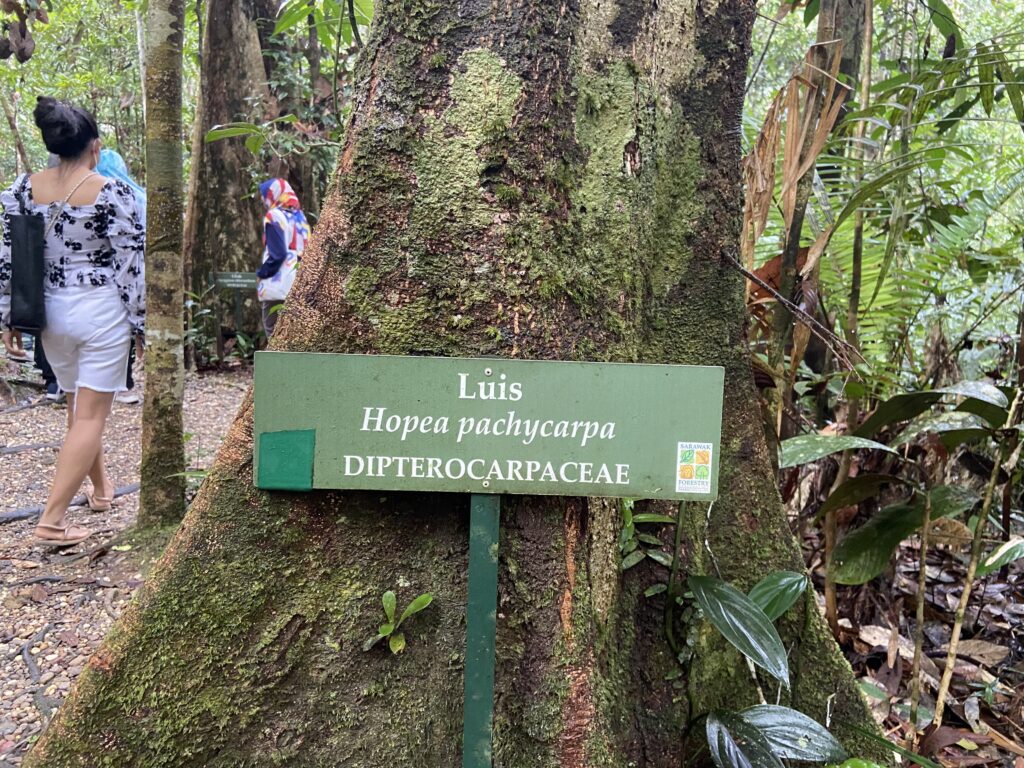
For general information and updates on the reserve, their website (https://semenggoh.my/) is a great resource. At the time I went (July 2022) the park was open twice per day, with feeding times from 9am-10am and 3pm-4pm. Entry for foreigners was 10RM and the gates open an hour before feeding time for you to walk around.
Personal Experience and Highlights
I arrived at 9am and started briskly walking to the main feeding area as a ranger shushed a group of giddy visitors. Before I could get any further, I looked up and saw a lone orangutan casually hanging from a tree! Jackpot! This orangutan was named Seduku, a 51-year old female and seeing her, the”Grand Old Lady of Semenggoh” gave an unmatched invigorating rush that made me want to share this experience with you.
She urinated from above (golden shower), said good morning to us visitors, and slid her way to the pavement. As she walked by, she stopped and scanned us tourists with her wise gaze. For a split second, her presence froze us, almost as if she was taunting us by trying to make our hearts beat out of our chests. Orangutans are not large particularly creatures, but their power can be felt.
She urinated from above, said good morning to us visitors
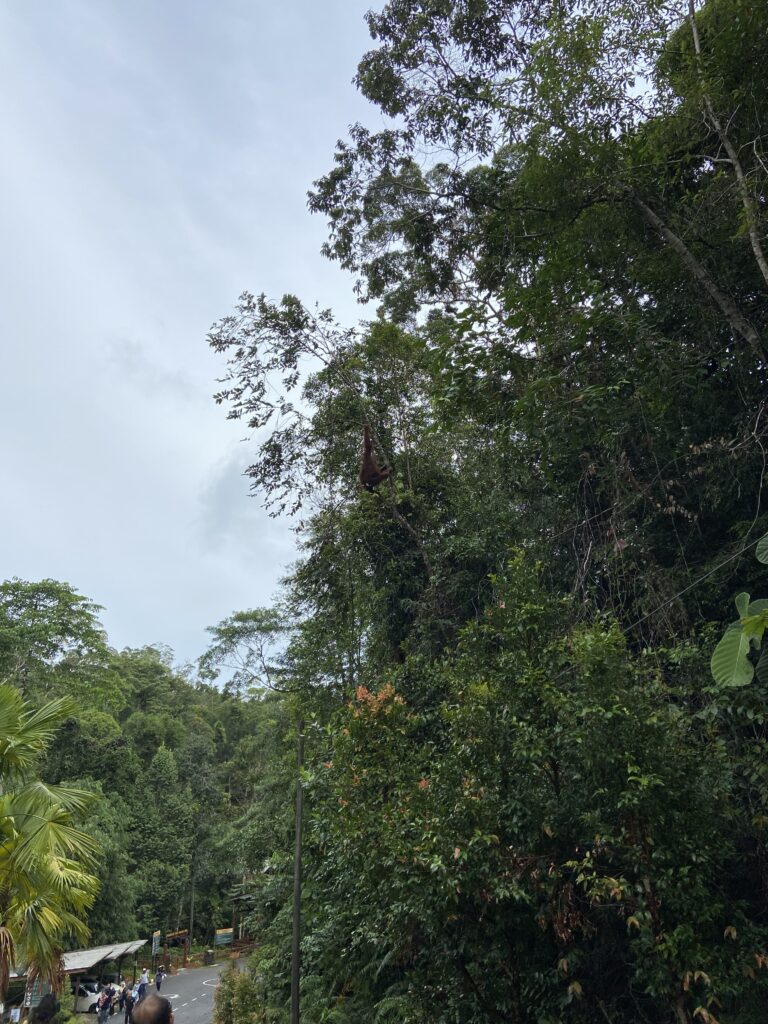
Seduku led us to the gate for a forested 200-meter walk to the main feeding area. At the main feeding area, we arrived to see several dozen people already positioned strategically for the best view of the feeding platform.
We all stood in awe at this simple act of animals eating bananas.
As the branches waved and shook a mother with her newborn clutching tightly (tighter than a fanny pack) slid down the rope to grab a bunch of bananas from the ranger. A perfect handoff. An adolescent followed from a safe distance. The time flew by quickly as we spectated, from a safe distance, these orangutans eating their mid-morning snack. We all stood in awe at this simple act of animals eating bananas.
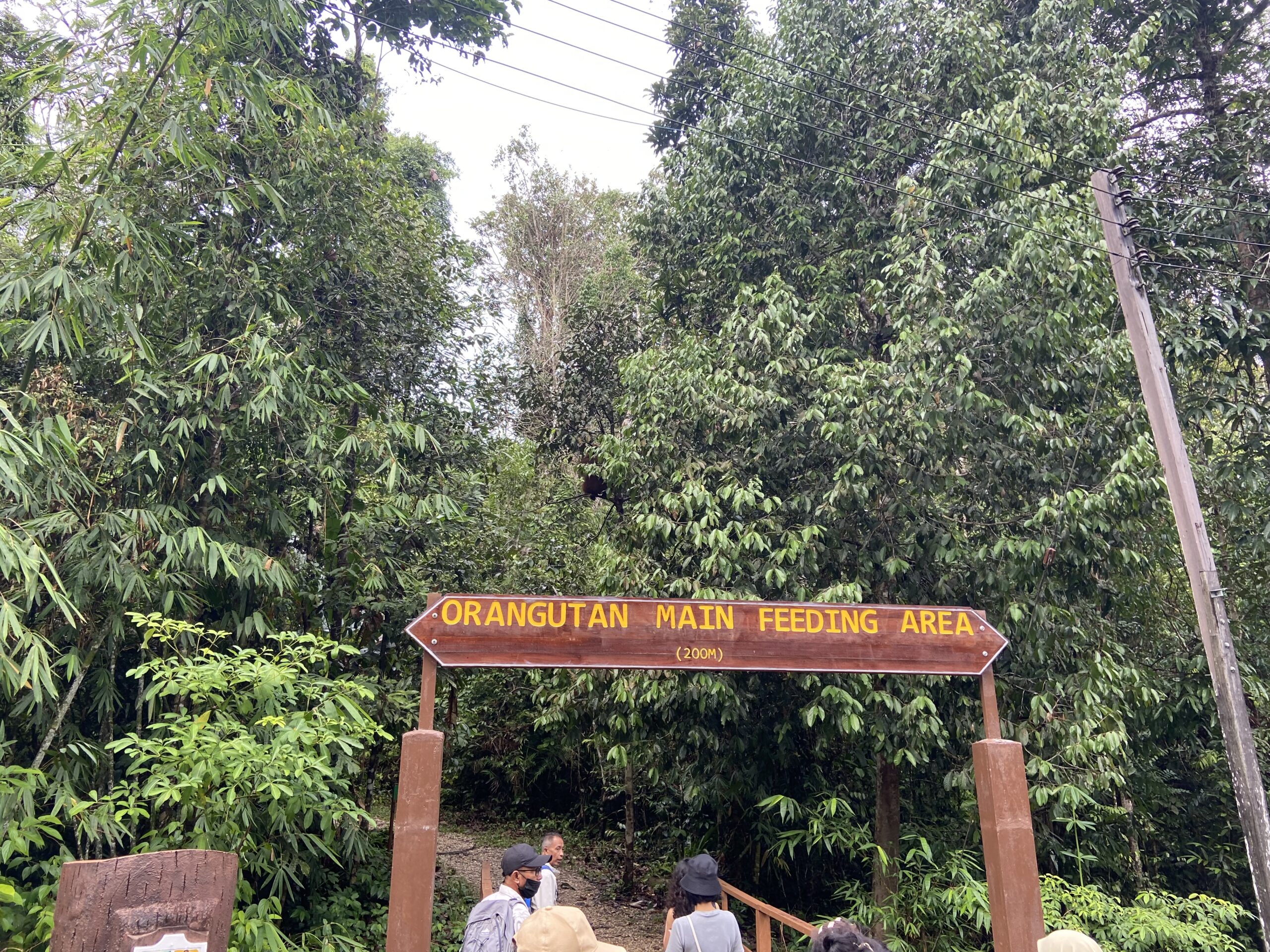

If you were on the fence about making a trip to Semenggoh Nature Reserve, hopefully this will motivate you to go. At first, I was unsure about going due to the limited time, but eventually made the decision to do it and 100%, it was the right decision.
How to get there from Kuching
For those of us who like to do things by ourselves (that is, without booking an organized tour), this is something that is fairly easy and affordable to arrange. You can use the ride hailing mobile application, Grab, to get there and back. I stayed in Kuching at the LimeTree Hotel (affiliate link) and the Grab ride from there was less than 35 Malaysian Ringgits (at the time < $8 USD) for a ~35 minute car ride.
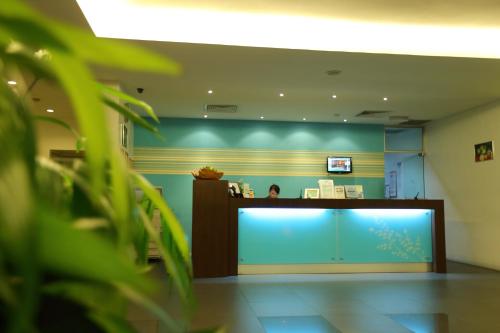
When you arrive at Semenggoh, there is a ticket booth where you sign in (they ask guests to write your passport #) and pay the 10 MYR foreigner entry ticket. Once your tickets have been purchased, you have the option of walking 1.5 km uphill to the feeding area or hopefully, your Grab driver is still waiting for you in the parking lot and will drop you off directly at the feeding area entrance.
The park closes after the feeding and with limited network signal, you might need to befriend one of the rangers for their tip on the perfect spot where your phone can request a Grab.
There are a lot of rangers on-hand and they were all friendly and eager to ask a barrage of questions thrown at them from how long is orangutan gestation to what is the size of male orangutan genitalia (real questions asked by visitors).
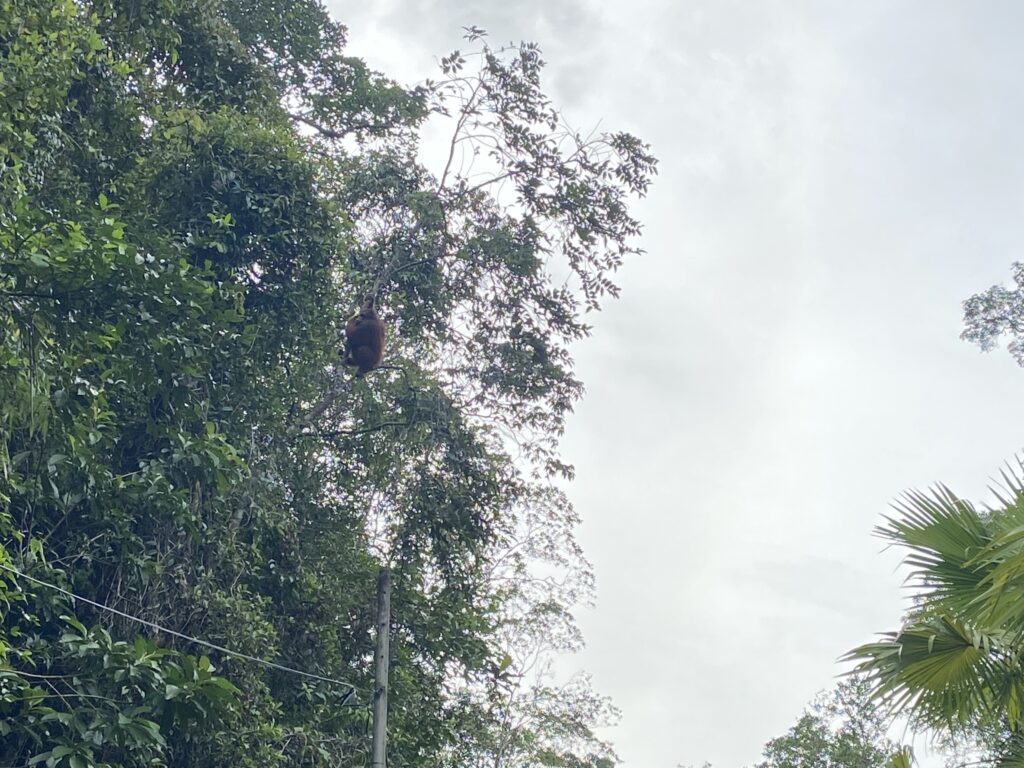
What to bring
You don’t need much. Money for your entry fee, comfy footwear, a phone/camera. The weather can be unpredictable so maybe sunscreen or a poncho. Binoculars are a plus or a mega-lens for your camera.
One thing that you should keep in mind when visiting Semenggoh is respect.
Important to know (Plus when is the fruit season???)
One thing that you should keep in mind when visiting Semenggoh is respect. Respect the land, respect the orangutans, and understand that you are just one of many visitors. The orangutans are semi-wild, so there is no guarantee that you will see one. Accept this reality.
The orangutans are semi-wild, so there is no guarantee that you will see one.
Having searched and read reviews online, the consensus was to “NOT GO DURING FRUIT SEASON!” That is because there is plenty of natural food available for the orangutans that they don’t need to seek out hand-out bananas from the feeding area.
Throughout my trip, I asked around several locals about when the fruit season was and I received different answers every time. Womp womp. However, talking with one of the rangers, the fruit season is at the end of the year (November-December). There may be 3-4 consecutive months where the orangutans do not even make themselves visible at the feeding area. If you happen to visit during one of these days, do not take it personal. Just accept that you are not going to see captive animals and they will not make an appearance just for your personal entertainment.
On a mid-July morning, I ate breakfast in Kuching, visited Semenggoh where I saw four orangutans, and was back in town before lunch.
I ate breakfast in Kuching, visited Semenggoh where I saw four orangutans, and was back in town before lunch.
I hope you are lucky too and that you will have a memorable trip.
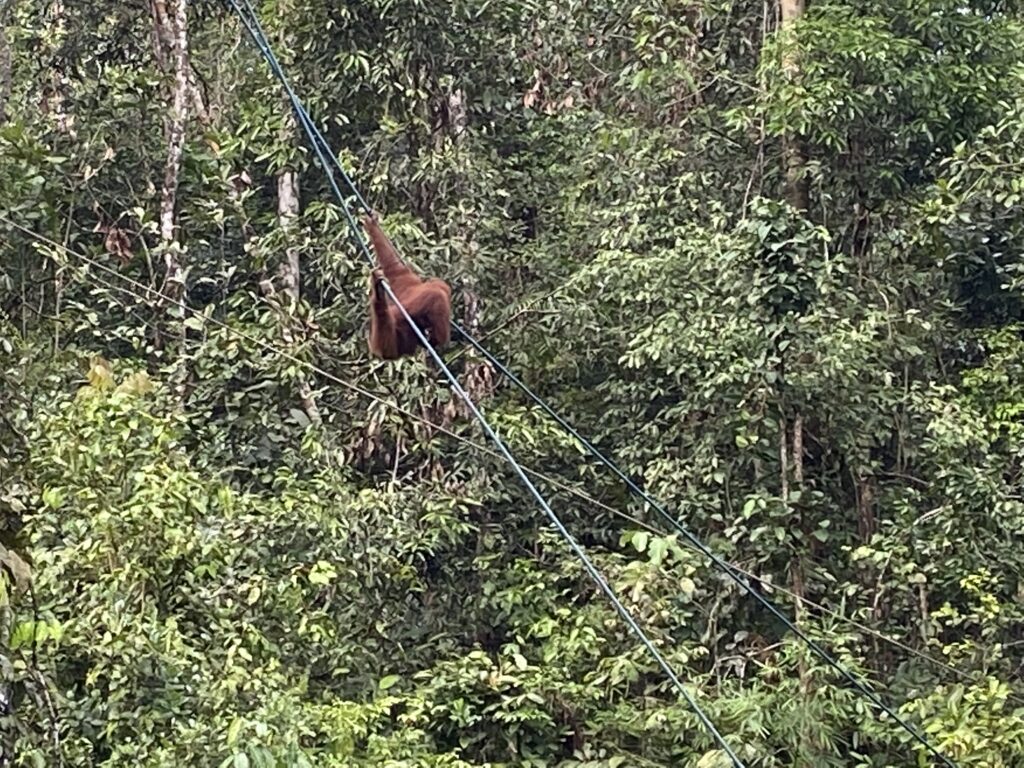
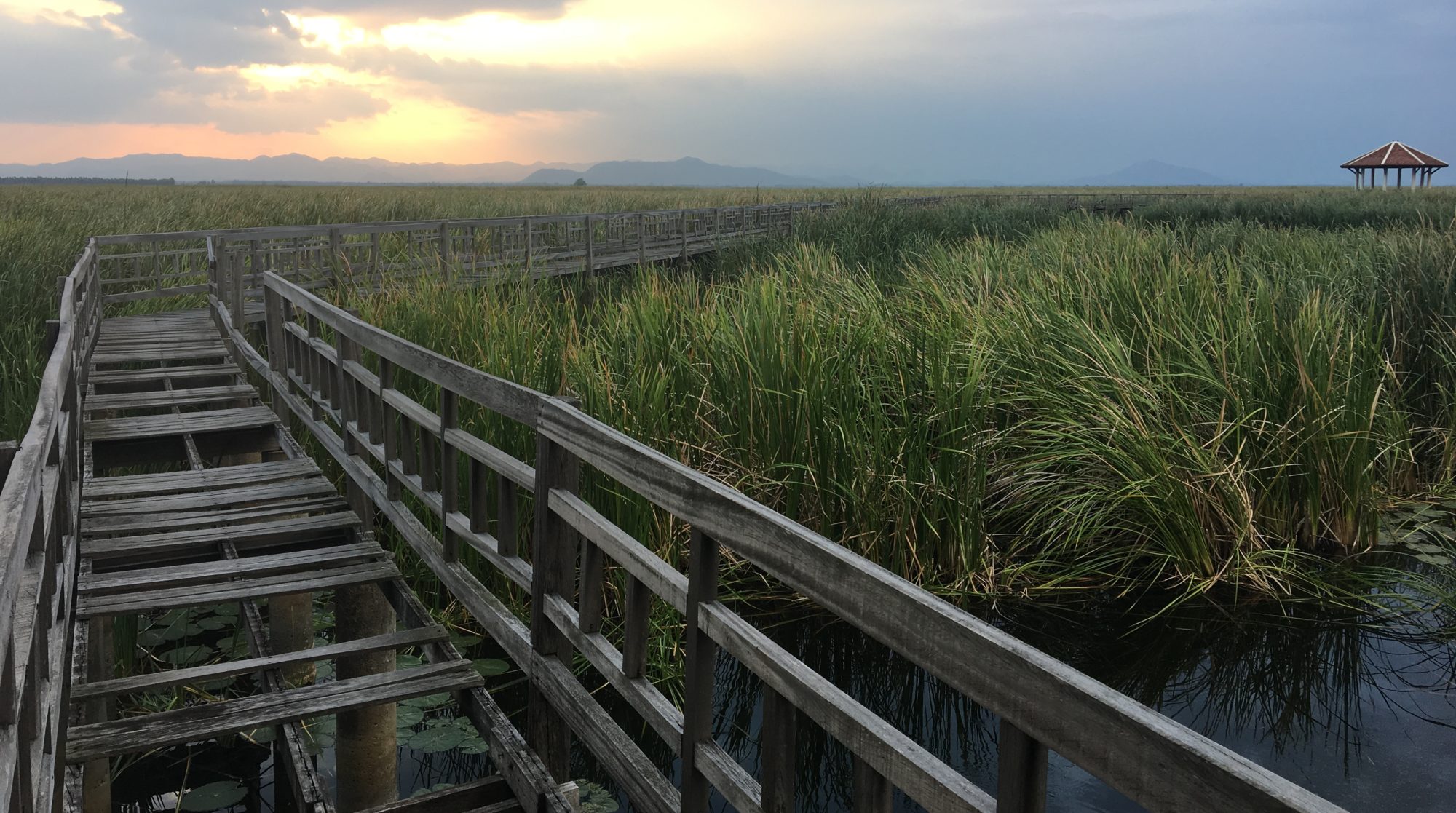

One Reply to “How to see Orangutans in Borneo: Semenggoh Nature Reserve”
Comments are closed.